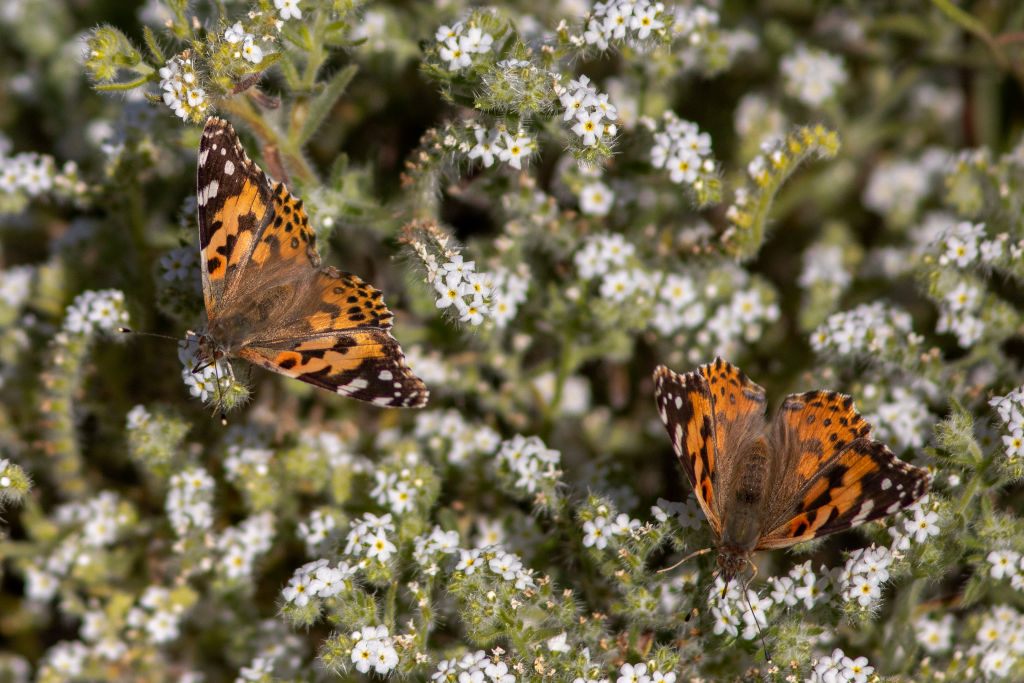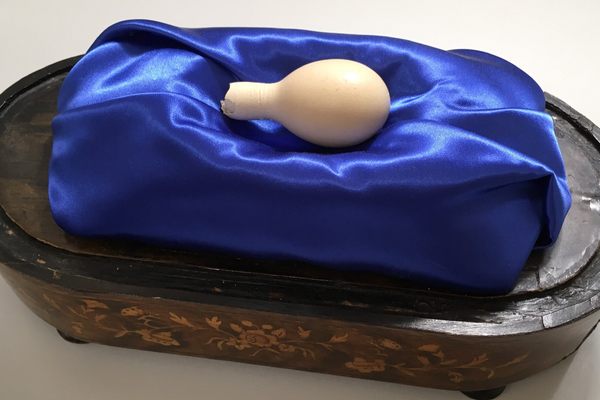An Amazing Butterfly Irruption Is Swarming Across California
Painted ladies are taking the skies by storm.

Currently, skies in Southern California look like a scene out of Hitchcock—a little less moody, maybe, and a bit more ethereal. From Burbank to Redondo Beach to South Central Los Angeles and beyond, swarms of butterflies have been flitting throughout the air in a fever dream of irruption and migration. And with the overall numbers of these tiny, two-to-three-inch butterflies, known as painted ladies (Vanessa cardui), appearing to be down in the region (from around 300,000 in 2017 to 25,000 last year, according to one monitoring program), this magical burst of lepidopterans brings both wonder and hope.
The painted lady fluorescence is the result of an unusually rainy winter in California—and in the deserts in particular, which also helped spur this spring’s wildflower superbloom. In a statement, James Danoff-Burg, conservation director of the Living Desert Zoo and Gardens, said “the average annual rainfall in the Coachella Valley is three inches. This year, we had three and a half inches on Valentine’s Day alone.” Art Shapiro, an ecologist at University of California, Davis, who’s been studying butterfly migration since 1972, told CNN that “Painted ladies tend to thrive when there’s a superbloom because there are so many plants for the butterflies to lay their eggs on and for caterpillars to eat.” While these butterflies migrate from Mexico every year, through Southern California’s deserts, to the Pacific Northwest, they usually go relatively undetected because there aren’t quite so many of them.
This year’s phenomenon is referred to as an irruption. “The difference is that a migration is a seasonal occurrence,” says Matthew Shepherd of the Xerces Society, an invertebrate conservation nonprofit based in Portland, Oregon. “An irruption is a sudden and massive surge in population size that doesn’t happen each year. Essentially, there is a super-abundance of something that leads to a population that is so large that the pressure just keeps pushing the butterflies on the edges further and further is search of flowers.”
Another reason the critters are making their way up the coast from Mexico, where they winter in the Sonoran Desert, is because of this crowding. “The pressure of having so many butterflies in one area is forcing them outward,” says Shepherd. “The mass of host plants that the caterpillars eat is as important to this as the availability of nectar to fuel the adults. The butterflies are not so much leaving something behind, but moving in search of plants and areas that aren’t saturated with other painted ladies!”

The small insects flitting through California’s vistas are cousins of the larger and more vibrant monarch, which faced critically low population numbers (down 85 percent) in California last year. Both butterflies are similar in color—orange and black with whispers of white—and are essential pollinators of the state’s plants. Tom Merriman, director of the Encinitas-based butterfly nonprofit Butterfly Farms, says that butterflies “can get into flowers bees can’t get to,” and that “monarchs are considered an indicator species that help us judge the condition of our environment.”
According to Merriman, the last time Southern California an event like this was in 2005, an El Niño year. (Then, I-5 was closed in Southern California due to the quantity of dead butterflies on the road surface, Shepherd says.) That wet year, there were estimated to be more than a billion painted ladies. Based on the butterflies that flew through Encinitas just yesterday, Merriman ventures that the region is seeing just as many. “They’re moving pretty quickly and can travel nearly 30 miles per hour and can cover up to 100 miles a day,” Merriman says. Occasionally, the ladies stop to sip nectar from flowers, and then continue their haste.
“Think cars traveling on the freeway, they’re all going the same direction but not really together,” Merriman says. “We think it’s going to go on for a few more weeks. They’re not going to be as dense—some will run out of energy and stop to feed and breed, some will run into predators, or worse, automobiles.”
The painted ladies are expected to stay, wherever they settle down, throughout the summer. Shepherd’s guess is that they’ll arrive in Oregon sometime in April. They’ll make offspring, and the ones flying north now will almost certainly be grandparents by July. For most of them, the Pacific Northwest will be the end of the road. “Painted ladies mostly die where they are at the end of the season,” Shepherd says, because their average life expectancy is two to four weeks. Then their descendants will travel back to Mexico in the fall.















Follow us on Twitter to get the latest on the world's hidden wonders.
Like us on Facebook to get the latest on the world's hidden wonders.
Follow us on Twitter Like us on Facebook